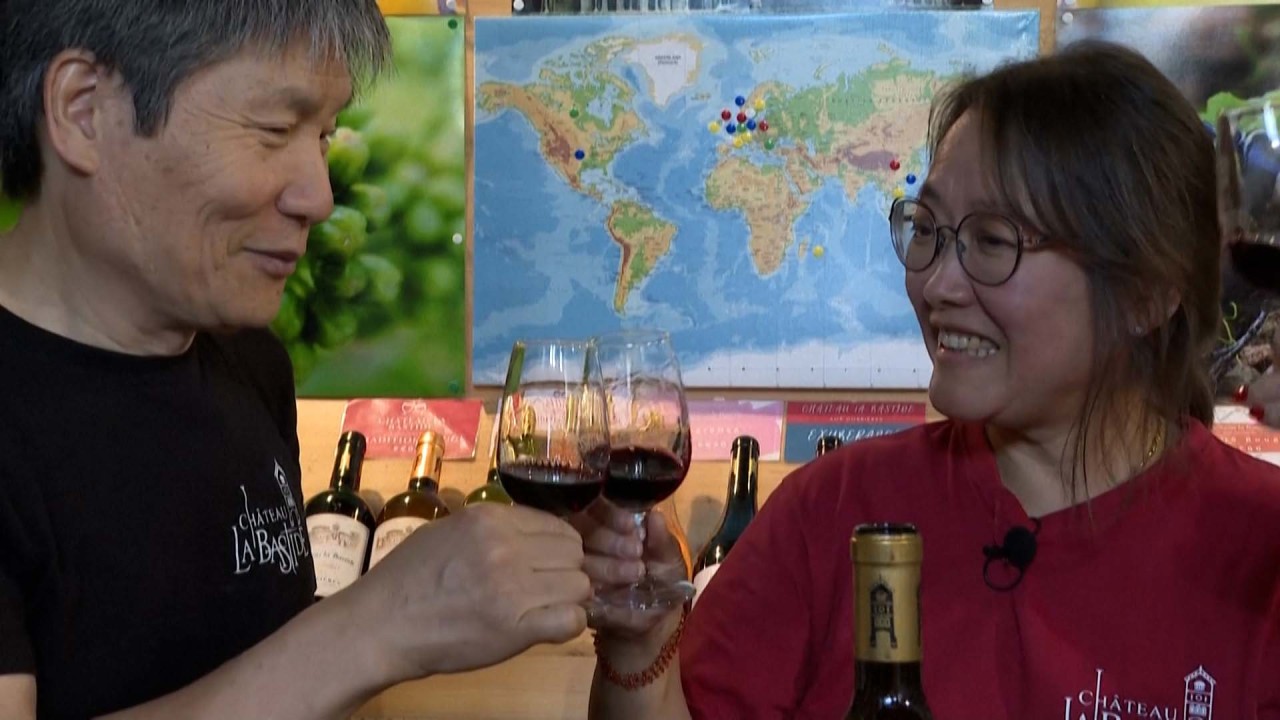
Glass half empty: Why Japan’s love affair with Beaujolais Nouveau has soured
- With so many good wines from around the world becoming increasingly available, the favourite party quaff may struggle to recapture its market share in Japan
- The once cheap and cheerful plonk is having to contend with soaring costs as fuel becomes significantly more expensive and transportation more complicated
The bubble may have burst for Beaujolais Nouveau in Japan, with a steep increase in the cost of delivering to the country that was once an important market making the fruity red more of a luxury than a cheap reason for a party.
Importers and consumers of wines say that with so many good wines becoming increasingly available from around the world, Beaujolais may struggle to recapture its market share in Japan.
After the success of an excellent marketing campaign in Europe in the 1960s that saw races to deliver the first bottles of the wine to restaurants and bars for the third Thursday every November, Japan started to import large quantities of Beaujolais Nouveau in the middle of the 1980s, the peak of the nation’s freewheeling “bubble economy.”
Imports peaked in 2004 at 1.04 million cases of wine, each containing 12 bottles, but even as sales began to decline, Japan still imported close to 5 million bottles as recently as 2019, accounting for about half of the entire output of the Beaujolais region of France, just north of Lyon. In 2020, that figure fell to 3.8 million bottles.
Japanese brewers look to Chinese drinkers to make sake hip again
The world has changed dramatically in the last three years, however, and Beaujolais Nouveau is likely to be affected by those changes.
First, the coronavirus pandemic prompted the Japanese government to impose a series of states-of-emergency from the summer of 2020, forced bars and restaurants to limit the number of patrons and close early. The public largely stopped going out, with even private parties frowned upon.
While drinking and dining out is no longer dissuaded – despite record-setting cases of the virus still sweeping the nation – Beaujolais is having to contend with soaring costs as fuel becomes significantly more expensive and transportation to Japan more complicated.
Whereas previously the wine would overfly Russian airspace on its way to the Far East, the invasion of Ukraine and subsequent sanctions on Moscow mean that all airfreight imports need to take more circuitous routes. Flights from Europe to Japan are now taking an additional four hours, so fuel prices are far higher than in the past.
Importers are being forced to pass those price increases onto consumers. For example Kirin Holdings, one of the “big four” producers and importers of alcoholic beverages, announced it would only have two varieties of Beaujolais available this year, with a 750ml bottle likely to retail for Y4,310 (US$31.54), more than double last year’s price.
The price of a similar-sized bottle available through Suntory Holdings, another major player in Japan’s drinks sector, would rise about 40 per cent to Y3,500 (U$25.62) and the selection will fall from 15 labels to just three.
“Japanese people have long really enjoyed Beaujolais Nouveau, and I think that is because it is very light bodied – almost close to grape juice – and it complements the Japanese palate very well,” said Tomomi Nakamura, founder of the Tokyo-based Pocket Wine School Co.
“Unfortunately, there have been many challenges in recent years and the last time that we could bring together many customers was November 2018,” said Nakamura, whose company imports wines and also hold wine appreciation classes.
“I would say that 2019 was the start of the decline in love for Beaujolais Nouveau, and that has been hastened by the pandemic making it far more difficult for people to get together to share a glass of wine,” she said.
Nakamura said she plans to hold her annual Beaujolais Nouveau evening as usual in November, but this year she will provide a small selection of labels – primarily because of the rising costs – but also include a number of “better” but not as well-known products of the region, including Beaujolais Village, which provides a “finer impression” of wines that use the Gamay variety of grape.
“Our party may be smaller this year again, but we still plan to gather so fans of Beaujolais Nouveau can enjoy this unique occasion,” she told This Week in Asia.

Eric Fior, a French national and owner of the Yokohama-based Eric Foreign Language Institute, said it was possible to find bottles for as little as Y1,000 (US$7.32) last year but that a decent label would be around Y3,000 (US$21.96).
“Some people were happy to pay that last year, but if prices are going to double then you would have to be crazy to pay that much,” he said.
He also suggested that an effort by the French vineyards to bring prices down may backfire. Some producers have started to use plastic bottles to reduce the weight of shipments, although the result is that the wine “looks cheap,” Fior said.
“That is not going to be appealing to a Japanese consumer – especially if they are still going to have to pay Y4,000 or more for a bottle,” he said.
Fior does still intend to go ahead with a Beaujolais Nouveau party in November, but he also plans to buy a limited number of bottles and provide a variety of other wines from other parts of France.
“I think this is an opportunity for Japanese people to try other wines and I’m sure they will find plenty that they enjoy even more,” he said.


